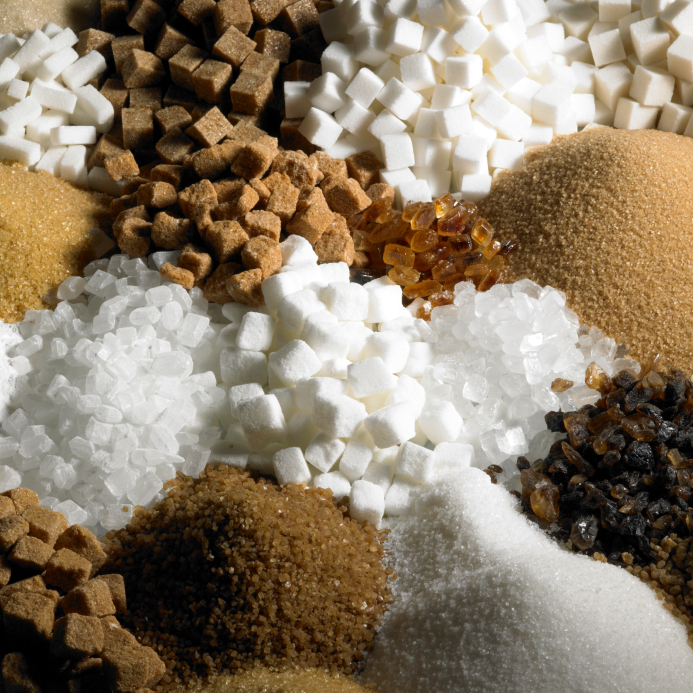It’s hardly a surprise to hear sugar is bad for us. Everyone knows it adds empty calories and causes our blood sugar to spike. But it’s even worse for you than that: a 2014 study published in the Journal of the American Medical Association revealed some shockingly stark news about added sugar: it dramatically increases our risk of dying from a heart attack. According to the study, people who ate close to 20% of their daily calories from added sugar (roughly 400 calories worth) had a whopping 38% higher risk of dying from heart disease than those who ate 10% of their calories from added sugar. If you have been thinking about cutting back on sugar but haven’t made the change yet this study could give you the inspiration (aka: kick in the pants) you need to make a point of doing it.
What counts as added sugar?
It’s important to note that the study refers to ADDED sugar —the stuff put into food for extra sweetness—not the sugars inherent in foods like fruit and dairy. You’d be missing the mark if you swore off those healthy foods because of the sugars they naturally contain.
Instead cut back on added sweeteners, which come in many forms. At home you might find white sugar, brown sugar, corn syrup, honey, maple syrup, agave, molasses, raw sugar, coconut sugar and more. (Although sweeteners like honey, maple syrup and molasses are less refined and offer some antioxidant and mineral benefits, they still count as added sugars.) There are also more sugars manufacturers put in packaged goods such as fructose, maltose, invert sugar, high fructose corn syrup, and sucrose.
When looking at the nutrition facts label on packaged foods, note that the label is now in transition to fit with updated 2020 standards. Some manufacturers have adopted the improved label already and others have not. The old label lumps together all sugars without differentiating between those coming from whole foods like fruit and those coming from added sweeteners. The updated label specifies the amount of added sugar so you can more easily keep track. To determine which particular sweeteners have been added, check the ingredient list.
Do I need to go cold turkey?
This doesn’t mean you should never have a cookie again (whew!) or that you have to skip the lovely drizzle of maple syrup on your oatmeal. Simply cutting down on added sugar could make a huge difference in your health. The American Heart Association recommends limiting added sugar to 6 teaspoons (25 g) a day for women, and 9 teaspoons for men (36 g). While those numbers are less than half of what the average American currently consumes, they are completely do-able with some small changes.
Cut out sugary drinks. Most of our sugar intake comes from sweetened drinks like regular soda —just one can of soda has nearly 10 teaspoons of sugar— the suggested daily limit—so skipping sugary drinks is a huge leap in the right direction.
Step down gradually. Rather than cut sugar drastically, take it down in small steps, gradually using less to give your taste buds a chance to adjust. Reduce the sweeteners you add to your food or drinks by a quarter and then a week later cut it to half and so on.
Get plain. Buy plain, unsweetened cereals and yogurts and add fresh or dried fruit for sweetness and a bit of extra sweetener, sparingly, if needed. Chances are you will use much less than if you purchased it already sweetened.
How can I satisfy my sweet tooth more healthfully?
Bake Better. Like I said, you don’t need to go the rest of your life with out a cookie, or a piece of cake for that matter. The 6 to 9 teaspoon teaspoon budget will allow you a sensible portion of even the most indulgent dessert once in a while. But you can have what you crave in a healthier way by baking better. It may take a little experimenting, but oftentimes you can simply cut the sugar in your favorite recipe by a quarter to a third with perfectly delicious results. Also, using dried fruit and/or fruit purees in muffins and quick breads, add sweetness healthfully and allow you to pull back on added sugars.
Get Fruity. Using very ripe bananas and/or dates in smoothies give enough sweet flavor so you don’t need to add any sugar. Mango puree is excellent to add sweetness to traditionally sweet sauces like barbecue sauce. And frozen fruit can be pureed with a touch of honey and a splash of milk to make a luscious sorbet-like dessert.
Take advantage of sweet spices. Cinnamon, cardamom and vanilla extract all amplify sweetness in foods, so add them to puddings, smoothies, and baked goods so you need less sugar. Simply sprinkling some cinnamon on sliced apples or pears can be all you need to turn a simple fruit into a sweet-tooth satisfying dessert.



